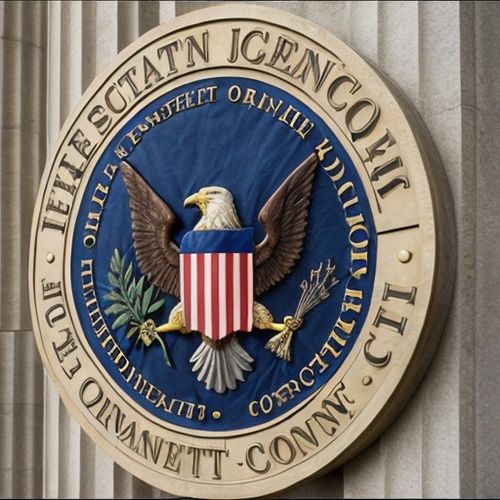The decision between financing a car through a traditional loan or opting for a lease arrangement represents one of the most consequential financial choices consumers face when acquiring a vehicle. While monthly payment amounts often dominate the conversation, the true financial implications extend far deeper into long-term ownership costs, depreciation curves, and opportunity costs that many buyers fail to properly evaluate.
Understanding the fundamental structures of these two financing methods reveals why they appeal to different consumer profiles. An auto loan represents installment debt where the borrower pays principal and interest over a set term (typically 36-72 months) until owning the vehicle outright. Leasing, by contrast, functions more like a long-term rental where the lessee pays for the vehicle's depreciation during the lease period plus financing charges, then returns the car unless exercising a purchase option.
The most visible difference appears in monthly payment amounts, where leases frequently undercut loan payments by 20-40% for equivalent vehicles. This surface-level advantage makes leasing particularly attractive to payment-sensitive buyers or those who prioritize driving newer models. However, the lower payments come with significant tradeoffs regarding long-term equity building and usage limitations that dramatically alter the total cost calculus.
Depreciation patterns form the hidden backbone of both financing methods. Auto loans front-load interest payments while gradually building equity, though most borrowers face negative equity during the early years as the vehicle depreciates faster than the loan balance decreases. Leases bake the projected depreciation directly into the payment structure, with the lessee effectively covering the difference between the vehicle's initial value and its residual value at lease-end.
This depreciation calculation creates divergent financial outcomes based on driving habits and market conditions. Lessees who exceed mileage limits (typically 10,000-15,000 annually) face punishing per-mile charges that can add thousands to the lease's true cost. Meanwhile, loan customers who keep vehicles beyond the payoff period benefit from several years of payment-free transportation - an advantage impossible to replicate through perpetual leasing cycles.
The interest rate environment plays a crucial role in determining which financing method proves more economical. When central banks maintain low interest rates as seen during the 2010-2022 period, money factor rates (the lease equivalent of APR) often make leasing exceptionally competitive. However, the recent high-rate environment has disproportionately impacted lease costs due to how money factors compound across the entire vehicle value rather than just the depreciated portion.
Maintenance considerations further complicate the comparison. Leases typically coincide with the manufacturer's bumper-to-bumper warranty period, theoretically eliminating major repair costs. However, lessees remain responsible for all scheduled maintenance and any damage beyond normal wear and tear - a frequently underestimated expense category. Loan customers face escalating repair risks as vehicles age but gain flexibility in choosing service providers and timing.
Tax implications vary significantly between the two approaches, particularly for business users. Self-employed individuals and corporations can typically deduct lease payments as business expenses, while loan interest deductions follow different IRS rules. Personal users in states with high vehicle taxes may find leasing advantageous since taxes apply only to the leased portion rather than the full purchase price.
The insurance cost differential often surprises first-time lessees. Lease agreements mandate full coverage with low deductibles, frequently resulting in premiums 15-30% higher than equivalent owned vehicles where the owner might opt for more basic coverage. This hidden cost erodes a significant portion of the perceived monthly payment advantage.
Residual value risk represents perhaps the most unpredictable cost factor. Manufacturers set lease terms based on projected future values, but economic shocks like the 2021-2023 used car market boom created situations where lease buyouts became tremendous bargains. Conversely, periods of rapid depreciation can leave loan customers underwater while lessees simply return the vehicle.
Customization preferences also factor into the financial equation. Loan customers enjoy complete freedom to modify vehicles or defer maintenance as they choose, while lessees face strict return condition guidelines. The average lessee spends $1,200-$1,800 in disposition fees and excess wear charges at lease-end - an often overlooked cost component.
Financial analysts increasingly recognize that the optimal strategy may involve alternating between methods based on market conditions. The pandemic-era vehicle shortage made leasing unattractive due to inflated residuals, while the current high-rate environment diminishes loans' appeal. Savvy consumers track these macroeconomic factors when timing their vehicle acquisitions.
Credit score impacts differ meaningfully between the two products. Lease approvals typically require higher credit scores, and lease payments generally don't build credit as effectively as installment loan repayment. However, excessive loan applications can temporarily depress credit scores through hard inquiries - a particular concern for buyers shopping rates across multiple lenders.
The opportunity cost of capital deserves consideration in any thorough analysis. Leasing requires little or no down payment (except for security deposits), freeing cash for higher-yield investments. However, this advantage assumes the lessee actually invests the difference rather than spending it - a behavioral economics hurdle many consumers fail to clear.
Long-term cost comparisons reveal that perpetual leasing - the practice of continuously leasing new vehicles every 2-3 years - becomes dramatically more expensive than the buy-and-hold approach over extended periods. Data from Consumer Reports shows that over a 15-year span, the loan-and-keep strategy costs 35-50% less than serial leasing when comparing equivalent vehicles.
Market volatility has introduced new wrinkles in recent years. Electric vehicles with uncertain depreciation patterns have made some lenders cautious, while other manufacturers use aggressively high residuals to promote EV leasing. These manufacturer subsidies can create temporary windows where leasing becomes the clear financial winner despite unfavorable broader market conditions.
Personal financial situations ultimately determine which approach makes sense. Cash-strapped buyers who must minimize monthly outlays may benefit from leasing despite higher long-term costs, while those with stable incomes and longer time horizons typically save through traditional financing. The most cost-conscious consumers often find that purchasing a quality used vehicle with cash outperforms both financing methods - though this requires substantial upfront capital.
Financial planners increasingly recommend matching the financing method to the intended ownership period. Clients who know they'll want a new car in three years should compare lease terms against a 36-month loan with anticipated resale, while those comfortable keeping vehicles for 7+ years will nearly always find loans more economical. This duration-based framework helps cut through the monthly payment myopia that clouds many buyers' judgments.
The evolving automotive landscape continues to reshape these calculations. Subscription services, flexible lease terms, and balloon payment loan options have introduced hybrid models that blur traditional distinctions. As vehicle technology accelerates and connectivity features become standard, the "tech obsolescence" factor may increasingly push consumers toward shorter ownership cycles regardless of pure financial considerations.
Ultimately, the auto loan versus lease decision transcends simple arithmetic and enters the realm of personal finance philosophy. The lease represents a consumption-oriented approach that prioritizes experience and convenience, while the loan embodies traditional asset accumulation - albeit for a depreciating asset. In an era where the average new vehicle transaction price exceeds $48,000, this choice carries more significant financial consequences than ever before.

By Benjamin Evans/Apr 24, 2025

By Olivia Reed/Apr 24, 2025

By David Anderson/Apr 24, 2025

By David Anderson/Apr 24, 2025

By Amanda Phillips/Apr 24, 2025

By Emily Johnson/Apr 24, 2025

By Sarah Davis/Apr 24, 2025

By Jessica Lee/Apr 24, 2025

By John Smith/Apr 24, 2025

By Grace Cox/Apr 24, 2025

By Olivia Reed/Apr 24, 2025

By Lily Simpson/Apr 24, 2025

By Noah Bell/Apr 24, 2025

By Megan Clark/Apr 24, 2025

By Noah Bell/Apr 24, 2025

By George Bailey/Apr 24, 2025

By George Bailey/Apr 24, 2025

By Natalie Campbell/Apr 24, 2025

By Daniel Scott/Apr 24, 2025

By Benjamin Evans/Apr 24, 2025